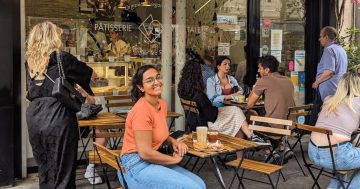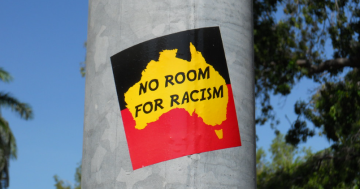
The National Multicultural Festival highlights the diversity and uniqueness of the Canberra community. Photo: National Multicultural Festival.
I was recently at an event with friends when I pointed out another attendee who was a person of colour.
“It’s so great to see other culturally diverse people here,” I remarked. “I’m used to being the only non-white person when we come to things like this.”
For context, I had been attending similar events in this particular community for a while and was used to being surrounded by white people. That’s not an unfamiliar experience for many migrant Australians, and I’ve always felt welcomed and included in the community, but it is always nice to see someone else from a minority group when you also belong to it.
I remarked on it because to me, seeing another person of colour in the room was a sign of progress, evidence that the community was growing and reaching new people.
My friend looked at me, somewhat affronted, and said, “I wasn’t thinking about her race at all! I wouldn’t even have noticed it!”
I was perplexed.
My friend seemed quite defensive, as though by mentioning race and the fact that most of the people in the room were white, I was accusing her and all the white people there of deliberately excluding people of colour.
“Personally, I don’t want people to have to ignore my race to accept me,” I said mildly. “I think it’s good to acknowledge and recognise diversity when we see it, and to think about why we don’t see it more often, and how we can change that.”
We were silent after that for a while, and I kept turning the conversation over in my mind.
This isn’t the first time I’ve come across the ‘colour blind’ approach to inclusivity.
My friend was ostensibly claiming that she didn’t see race because she wanted to show that she is far from racist – race has no bearing on how she interacts with or reacts to people. But this approach actually reinforces the idea that racial difference is a negative – if your approach to equality is to ignore difference or accept people despite their differences, you’re validating the idea that their cultural diversity detracts from their worth if it is taken into consideration.
I would argue that, actually, I want people to see my differences and for that to have a positive bearing on my worth and value as an individual. I don’t want to deny my skin colour and my cultural background to fit in and be included.
When my friend said she didn’t notice the other event attendee’s race, she was trying to say that race doesn’t matter to her, and therefore calling it out was actually creating a problem where there is none. But what she failed to recognise is that, as a white woman, she has the privilege and opportunity to ignore race because her race doesn’t define significant aspects of her life.
I can’t ignore my race because it impacts whether I am treated respectfully in public, at work, in the health system and in the community. Structural racism impacts my ability to get a job, to get culturally responsive services, to be given opportunities or to be seen as Australian at all. Being colour blind isn’t an option for people of colour, and it also does nothing to genuinely progress racial equality either.
That doesn’t mean I think everyone should point out cultural diversity whenever they see it, or home in on an individual’s cultural background. But when you notice a lack of diversity in a room or realise that a person of colour stands out in a particular context because they are the only one present, instead of applauding yourself for not thinking about race, take a moment to really think about it. Question the systems and structures that may make a certain part of our community inaccessible to people of colour, and reflect on how you can help dismantle them.
‘Colour blindness’ is just ignoring a problem instead of attempting to solve it.






















